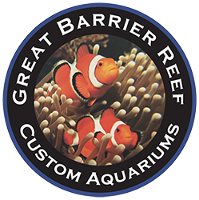18584 Longs Way, Parker, CO 80134
By Appointment Only |
How to Care for Coral in Your Saltwater Aquarium in DenverNothing brings the beauty of the ocean closer to your home quite like live coral. At Great Barrier Reef, we are committed to helping customers enjoy the wonders of the sea with a saltwater aquarium in Denver. We provide a variety of services and products that will allow you to create wondrous seascapes in the comfort of your home or place of business. Many of our customers turn to us for saltwater aquarium designs, installation, and maintenance. A flagship feature of the saltwater option is live coral. We offer aquarium maintenance services for our customers. However, we also understand that you may want to try your hand at growing and nurturing coral. Here are some tips you can use to get started. First, an important reminder: please remember that corals are living beings. In their natural ocean habitats, they support the ecosystem and help fish and other organisms thrive. It is important to remember that when growing coral, you are also caring for living animals. Be Mindful of the Aquarium’s AgeJust like moving into a new apartment, coral needs time to adjust to its new surroundings. As such, consider holding off from placing a new coral in a brand new installation. Your new saltwater aquarium needs time to settle into its circulation cycles, pH, and nutrient levels. The condition of your aquarium’s water directly influences the health and vitality of your coral. After one to three months, consider adding “soft coral.” Soft coral doesn’t depend on calcium as much for skeletal development and growth, and most nutrient pathways in your aquarium will already have been established. After the fifth month, you can add large polyp stony (LPS) coral. Then, at month nine through twelve, you can add small polyp stonies (SPS). SPS coral is among the most difficult coral to raise, but their investment is well worth it. They will add a colorful atmosphere in your aquarium that cannot be rivaled. A good indicator that your aquarium is ready for these types of coral is to check the size of the coralline algae in your tank. Deposits with a diameter of 3mm or more indicated LPS can be added, while deposits that are larger than a quarter means you can start added SPS coral. Use the Right EquipmentA saltwater aquarium needs to have an environment that closely resembles the natural habitat of coral. As such, you need to invest in equipment that will allow your tank to match the temperature, pH levels, and lighting of the ocean. One of the most important pieces is a skimmer, which removes organic waste and prevents the release of ammonia. Next, get heaters and fans that can keep the water temperature consistent throughout the day. A good temperature to maintain is between 77-84 degrees Fahrenheit. The key here is consistency: don’t let the temperature fluctuate more than 2 degrees. Water movement to mimic currents is also an important factor. Remember: coral in its natural habitat is exposed to hundreds of thousands of gallons of moving water throughout the day--and it is this action that allows them to live and contribute to the ecosystem. You will want to purchase equipment that causes turbulent and non-linear water flow. A straight stream of water is not recommended, as it can strip the coral and damage it. Raising coral takes time and dedication. By all means, it is another investment that is part of your saltwater aquarium. With time, dedication, and effort, you can recreate beautiful and serene seascapes in your home or business. Adding coral to your aquarium is a great feature, but it is also a hobby that may not be for everyone. Contact our saltwater aquarium professionals to learn more about your options for decorating your tank. |
